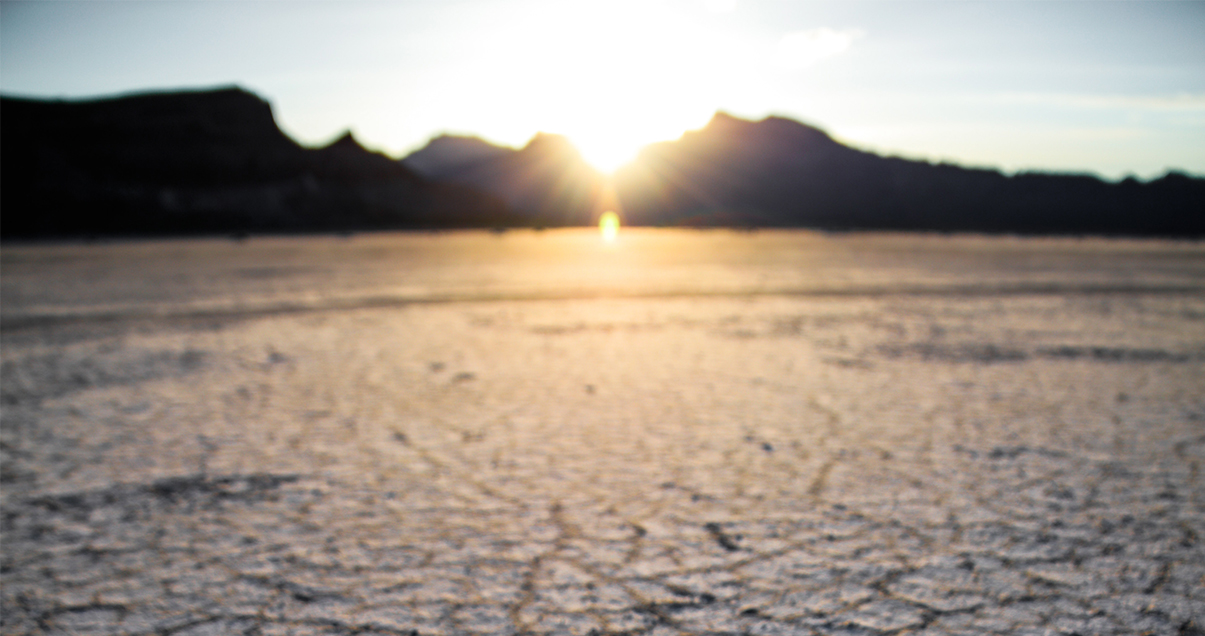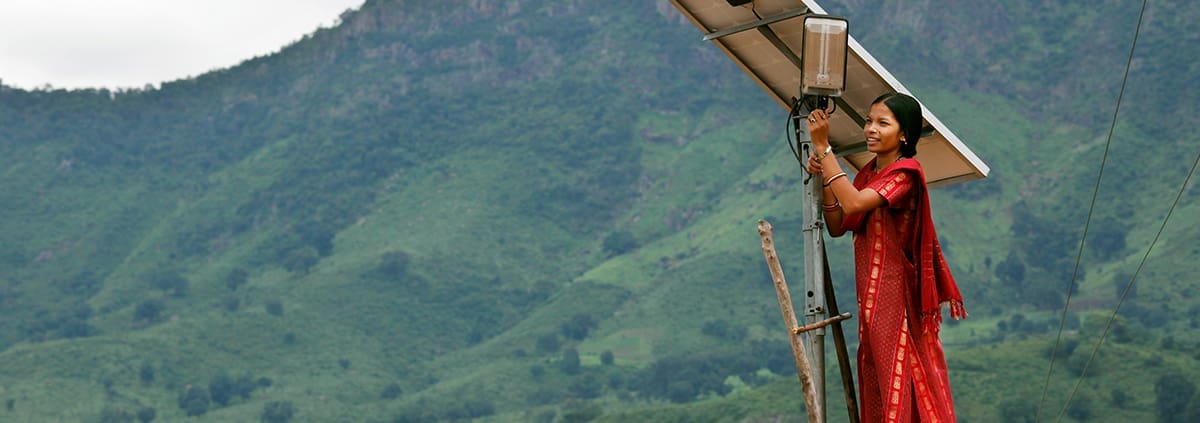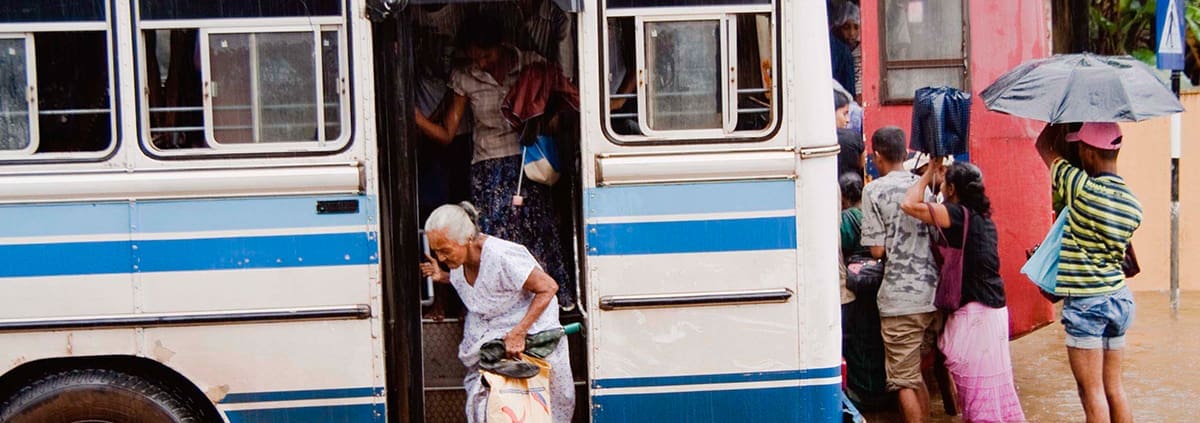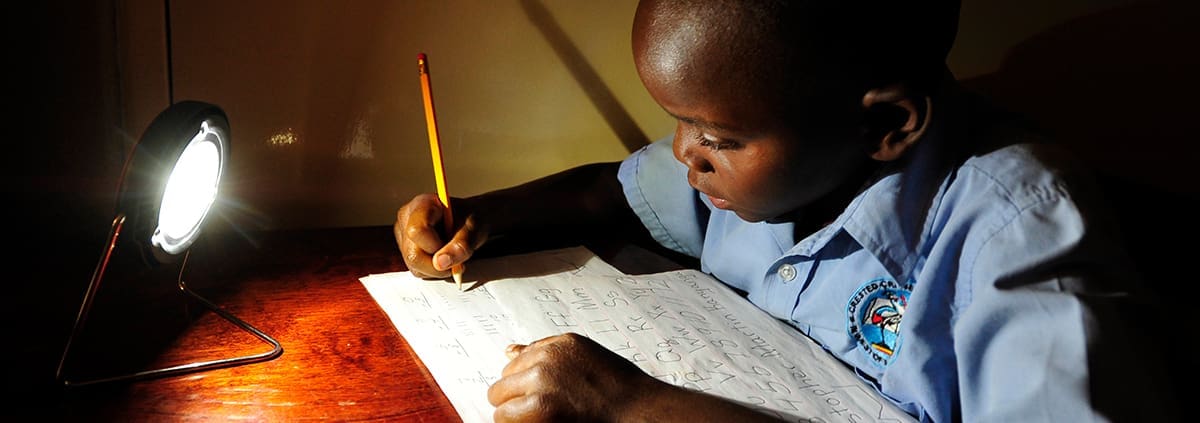The climate change image crisis

It is the year 2004. In Oxford in the United Kingdom, Richard Sexton and George Marshall found Climate Outreach. With the NPO, they pursue the goal of incorporating climate change into public discourse by using a new narrative and authentic images. After all, even though the climate crisis is a widespread topic, people do not seem to be entirely aware of its effects. So what makes it so difficult to talk about climate change?
Climate change has an image problem
We are familiar with the often-used motifs of climate change, in particular: melting polar ice caps, drowning polar bears and smoking industrial chimneys. Yet climate change is rarely part of our everyday conversations. What is the reason for this? The fact that these images have no impact is largely due to the one-sided representation of this multi-faceted issue. That is why Climate Outreach is pursuing the goal of revitalizing the topic in the public sphere by formulating an appropriate narrative. In addition, the visual language needs to be adapted, because there are many images and a wide range of effects associated with the climate crisis, all of which need to be presented appropriately. We need images that show at once both the impact of the climate crisis at a local level and the opportunities and innovations it yields. In short, there is a lack of authentic images that create a link to people’s everyday lives.
How do you depict climate change correctly?
The NPO created seven core principles for communicating climate change correctly with images. In order to turn these principles into actions, Climate Outreach initiated the Climate Visuals program. Here, the creation of the program also began with a simple question. A customer inquired after a visual communication strategy for climate change. When Climate Outreach was carrying out research on this topic, it noticed that this communication strategy did not exist yet. The environmental organization published the first report on this in January 2016.
Behind the NPO, there is a team with a wide range of skills that knows exactly how to reach people. Its strength in communication comes from having communication experts, social scientists and climate researchers in its ranks that want to fight climate change together in this way. With the right communications and the correct depiction of the most serious problem of the 21st century, Climate Outreach is trying to offer a comprehensive solution. Ultimately, the dilemma of the climate crisis is primarily centered around its image.
In order to find a fresh visual expression of the climate crisis, the program conducted a survey that combined two different methods. First of all, four discussion groups were formed. Of those, two were located in London and two in Berlin. In these groups, the participants discussed various images of the climate crisis and their impact. Then an international survey was carried out online. This survey involved 3,014 respondents from the U.S., the United Kingdom and Germany.
This gave rise to the core principles and the following seven rules: Show real people in images and not staged photo-ops
-
Tell new stories
-
Show climate change impacts at scale
-
Climate impacts are emotionally powerful images
-
Understand your audience
-
Show local but serious impacts
-
Be very careful with protest imagery
The survey came to the conclusion that most people were familiar with the classic climate change images and stories. That is why they no longer actively engaged with them. That changed with the seven rules.
These not only gave rise to completely new core principles for image communication concerning the climate crisis, but also led to the foundation of climatevisuals.org. By its own account, the program serves as the world’s first evidence-based image library. At the same time, the photographers retain all rights to the images because they are not the property of Climate Visuals.
The various galleries contain images concerning the relevant topic, each of which is accompanied by a caption. Short paragraphs provide the user with more background information relating to the photo. The image and information merge to create a new representation of climate change and enhance the focus and knowledge of the user. The aim is to steer clear of protest culture and return to public discourse.
What does climate change look like according to the seven rules?
A young woman is standing on a wooden ladder. photographed by Abbie Trayler-Smith, Panos Pictures. A precarious situation high in the treetops. But the woman has a big smile on her face as she adjusts the solar panels. The participants described this image as powerful and easy to understand, and perceived it as a positive example in the fight against climate change. This photo comes under the principles of “Show real people” and “Tell new stories”.
Another image, another story. The fact that there is frequent flooding in India is no surprise during the monsoon season, but these showers are becoming increasingly heavy. In this image (copyright Hafiz Issadeen, CC by 2.0), you can see people getting on and off a bus while standing more than ankle-deep in muddy water and holding umbrellas above their heads. When viewing this image, participants expressed a desire to find out more about the people it shows.
A photo with a striking effect: In remote areas that still do not have an extensive utility grid, solar energy is a convenient way to power lamps. This image captured by Patrick Bentley (CC by 2.0) shows a boy doing his homework. It is already dark, but he can keep studying thanks to the solar-powered lamp. Images like this allow the viewer to feel a connection with the subject. They can immediately see a positive benefit of renewable energies for individual people.
Another factor in successful image communication is the subject of the image. The survey showed that viewers will spend more time looking at images featuring people or animals. In addition to relying on emotional impact, Climate Visuals uses other methods as well. One of these is to use contrast in images: deforestation on one side, and a person planting a sapling in a barren landscape on the other. Owing to the predominantly visual orientation of the internet, Climate Visuals has developed a corresponding method: Multiple photos are shown together, or in a row, in order to tell a story using their impact alone. Then, this sequence of images is underpinned with informative facts. These methods create impact in new ways and achieve an approachable and multi-faceted representation of climate change.
The question now becomes: Has the program actually changed anything?
British newspaper The Guardian has reconsidered its editorial guidelines concerning the pictorial representation of climate change, drawing on advice from Climate Visuals in the process. Based on the program’s insights and research findings, the renowned newspaper began to select its images accordingly. Through this exchange, Climate Visuals is already reaching millions of readers in the United Kingdom indirectly.
In addition to the researchers from Climate Outreach, photographers from around the world take part in the program. With their images, they get these important stories circulating, thereby gaining people’s attention. The program is attempting to build on sociological research in Europe and the U.S. and permanently change the current visual communication and representation of climate change. In this way, it wants – above all – to shape a more diverse and more emotionally accessible way of dealing with the climate crisis. At the same time, with this program, Climate Visuals is both putting together a visually stunning resource for a wide range of organizations and providing a handbook for communicating climate change correctly in visual as well as verbal forms.
NGOs in particular can use these means to reach a larger target group and permanently alter the image of climate change. In addition, the program will enter into a future partnership with TED Countdown to further highlight the importance of the issue for the public. By using and circulating a new narrative as well as new visual resources, Climate Visuals may cause us to look more closely at a photo in future, and finally talk about climate change – just as we would about the weather.




